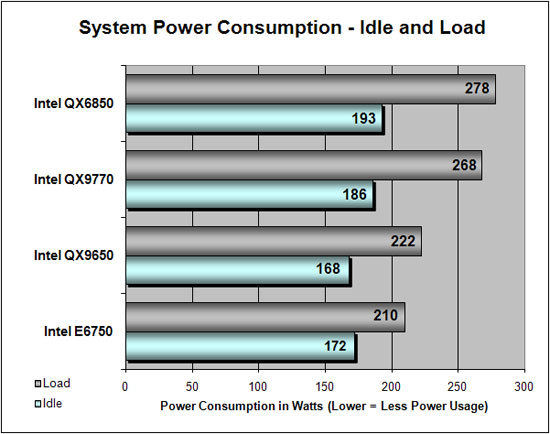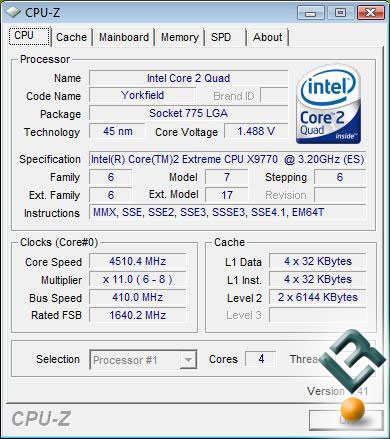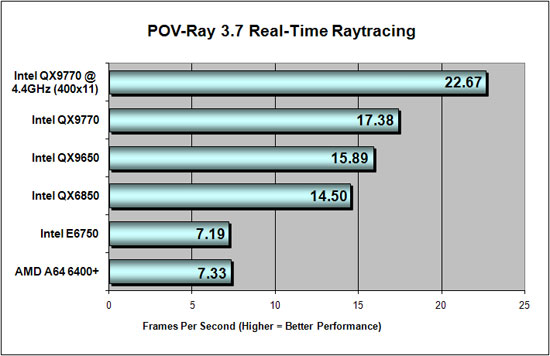Intel Core 2 Extreme Processor QX9770 Review
Power Consumption and Overclocking
Power Consumption
Since power consumption is a big deal these days, we ran some simple power consumption tests on our test beds. The systems ran with the power supplies, case fan, video card and hard drive model. To measure idle usage, we ran the system at idle for one hour on the desktop with no screen saver and took the measurement. For load measurements, POV-Ray 3.7 was run on all cores to make sure each and every processor was at 100% load. All of the systems used identical hardware minus the motherboard and processor.

Results: The Intel QX97700 consumes more power than the QX9650, but that makes sense since it has a lower TDP and uses less power. The QX6850 at 65nm uses more power at both idle and load, than the QX9770. It just goes to show that Intel has spent a lot of time with Yorkfield making sure it is energy efficient and that the core doesn’t leak. From this testing, it shows that 45nm is much better for power consumption as it was 20% more energy efficient at load over the Intel QX6850 at equal clock speeds!
Overclocking

The Gigabyte X38-DQ6 with BIOS version F6b was used for overclocking the Intel Core 2 Extreme Processor 9770 and the results were amazing. This processor starts life out at 3.2GHz and I aimed to max out the overall core speed so I increased the Front Side Bus speed until the system became unstable. With 1.5Vcore on the processor, the system was able to top out at 4.51GHz with partial stability. The Corsair Nautilus 500 water cooler was able to handle this overclock with ease, although the processor was running 57C at idle with this impressive clock speeds. At 4.51GHz the system would fail stability tests, but at 4.40GHz (400Mhz FSB x 11 multiplier) the system was stable and could be benchmarked.

Results: Just for fun we fired up POV-Ray Real-Time Raytracing and ran the application and found the Intel QX9770 enjoyed a 30% performance boost thanks to the 37% boost in overall clock frequency. This overclock shows how much potential Yorkfield processors have with proper cooling. Intel has done wonders with the move to 45nm and overclocking performance shows this quite well.

Comments are closed.